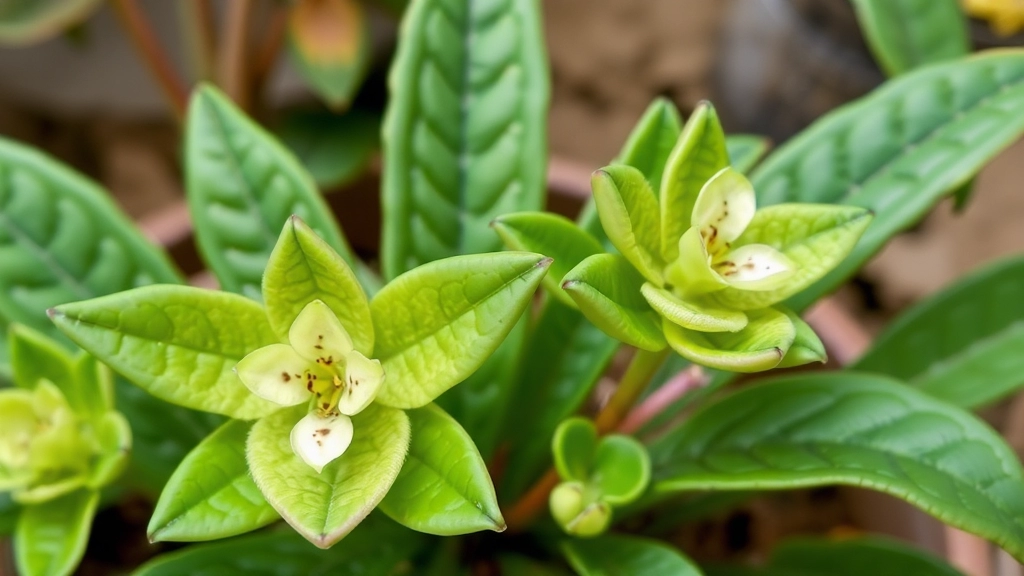Kalanchoe Delagoensis X Daigremontiana
Overview
When it comes to unique and eye-catching houseplants, Kalanchoe Delagoensis X Daigremontiana, also known as “Mother of Thousands” or “Pink Butterflies,” stands out. This hybrid succulent is famous for its vibrant pink plantlets that grow along the edges of its leaves, making it a popular choice among plant enthusiasts.
Caring for Kalanchoe ‘Pink Butterflies’
Caring for Kalanchoe ‘Pink Butterflies’ is relatively straightforward, but understanding its specific needs can help you keep it thriving. From optimal light and watering requirements to tips on propagation and maintaining its striking coloration, this guide covers everything you need to know to enjoy this fascinating plant in your home.
Overview of Kalanchoe Delagoensis X Daigremontiana
Are you curious about the captivating hybrid known as Kalanchoe Delagoensis X Daigremontiana?
This unique plant, commonly referred to as Kalanchoe ‘Pink Butterflies’, is a delightful fusion of two parent species.
The result is a visually striking succulent that boasts both aesthetic appeal and fascinating growth habits.
Kalanchoe Delagoensis, often called Mother of Thousands, is renowned for its ability to produce numerous plantlets, while Daigremontiana adds to the hybrid’s charm with its distinctive foliage.
Together, they create a vibrant plant that is not only easy to care for but also a conversation starter in any garden or indoor space.
Kalanchoe ‘Pink Butterflies’ features stunning pinkish hues, especially when exposed to optimal light conditions, making it a favourite among succulent enthusiasts.
Next, we will examine the unique characteristics that set Kalanchoe ‘Pink Butterflies’ apart from its parent species.
For more detailed care instructions, check out our guide on caring for Kalanchoe ‘Pink Butterflies’.
If you’re interested in purchasing this beautiful hybrid, visit our online store for the best deals on Kalanchoe ‘Mother of Thousands’.
Unique Characteristics of the Hybrid
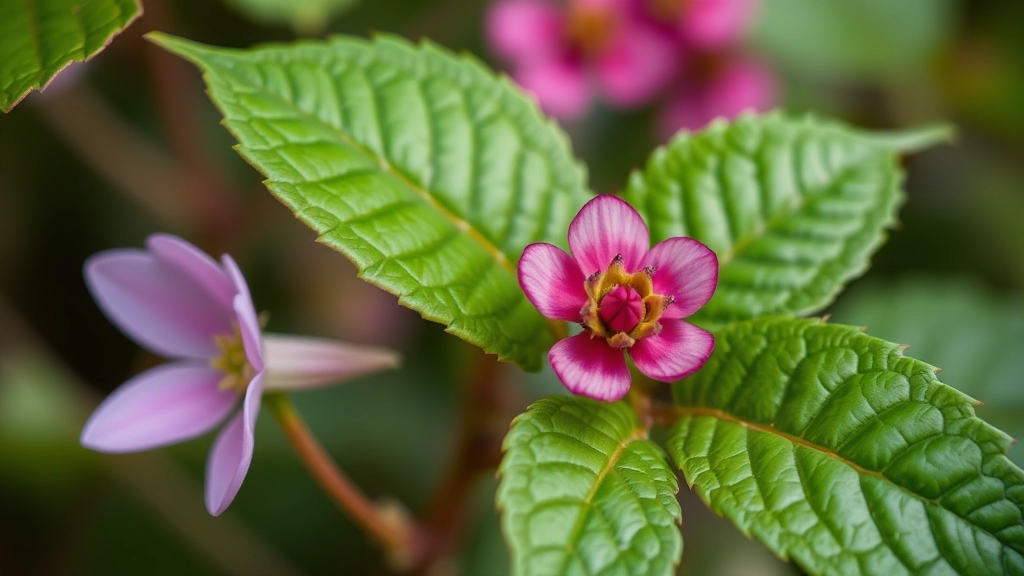
So, you might be wondering what makes Kalanchoe Delagoensis X Daigremontiana, or “Pink Butterflies,” stand out in the world of houseplants.
This hybrid is a delightful blend of its parent plants, and it brings together the best of both worlds.
Eye-Catching Foliage
- Shape: The leaves are uniquely shaped, resembling butterfly wings, which is where the name “Pink Butterflies” comes from.
- Color: You can expect a stunning mix of green and pink hues, especially when exposed to the right light.
Resilient Growth
- Hardiness: This hybrid is tough! It can handle neglect better than many other houseplants.
- Propagation: It produces plantlets that easily detach and root, making it a favourite for plant lovers.
Seasonal Blooms
- Flowers: When in bloom, it showcases clusters of small, tubular flowers that add a burst of colour.
- Timing: You’ll see these blooms typically in the spring or summer, depending on the care it receives.
Growth and Propagation of Kalanchoe ‘Pink Butterflies’
Are you wondering how to successfully grow and propagate Kalanchoe ‘Pink Butterflies’? You’re not alone. Many plant enthusiasts are keen to understand the best practices for nurturing this unique hybrid.
Growth Characteristics
Kalanchoe ‘Pink Butterflies’ is known for its striking foliage and vibrant colour. This succulent thrives in well-draining soil and prefers a warm environment.
- Growth Rate: This hybrid typically grows at a moderate pace, reaching a height of up to 30 cm (12 inches).
- Maturity: Expect your plant to reach its full potential in about 2-3 years, given the right conditions.
Propagation Techniques
One of the most appealing aspects of Kalanchoe ‘Pink Butterflies’ is its ease of propagation. Here are some effective methods:
- Leaf Cuttings:
- Gently remove a healthy leaf from the plant.
- Allow it to dry for a day or two to form a callus.
- Place it in well-draining soil and water sparingly until roots develop.
- Offsets:
- Look for small plantlets or offsets at the base of the parent plant.
- Carefully separate them, ensuring roots remain intact.
- Replant in a suitable potting mix.
- Stem Cuttings:
- Cut a healthy stem with several leaves attached.
- Let it dry for a day, then plant in soil.
- Water lightly until new growth appears.
By employing these techniques, you can expand your collection or share the beauty of Kalanchoe ‘Pink Butterflies’ with friends.
Timing and Conditions for Propagation
- Best Season: Spring is ideal for propagation, as the plant is actively growing.
- Temperature: Maintain a warm environment, ideally between 20-25°C (68-77°F).
- Humidity: Moderate humidity levels are beneficial but avoid overly damp conditions.
For more detailed care instructions, you might find our Care Tips for Kalanchoe ‘Pink Butterflies’ guide useful. Additionally, if you’re interested in other flowering Kalanchoe varieties, check out our Top Flowering Kalanchoe Species and Care Tips.
Care Requirements for Kalanchoe ‘Pink Butterflies’
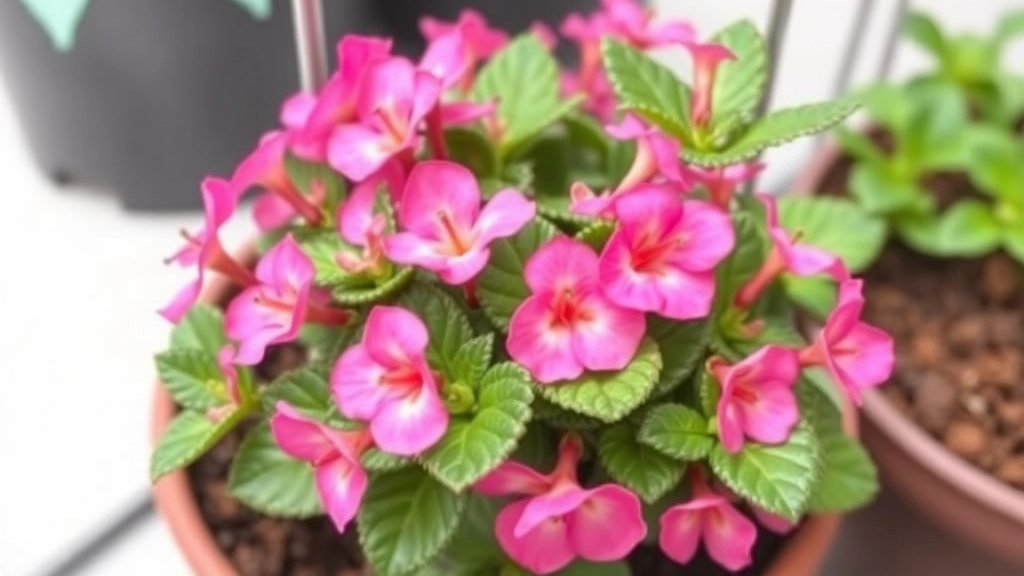
Caring for Kalanchoe ‘Pink Butterflies’ can seem daunting, but with the right approach, it becomes an enjoyable experience. This hybrid plant thrives when given proper attention to its specific needs.
Light Requirements
- Bright, Indirect Light: Place your Kalanchoe in a spot where it can soak up bright, indirect sunlight. Too much direct sunlight can scorch the leaves.
- Rotation: Rotate the plant every few weeks to ensure even growth.
Watering Needs
- Soil Moisture: Allow the top inch of soil to dry out before watering again. Overwatering can lead to root rot.
- Watering Schedule: During the growing season (spring and summer), water more frequently. In winter, reduce watering as the plant enters dormancy.
Soil Preferences
- Well-Draining Soil: Use a cactus or succulent mix that promotes good drainage. This helps prevent waterlogged roots.
- pH Level: Aim for a slightly acidic to neutral pH (6.0 to 7.0).
Fertilisation Tips
- Balanced Fertiliser: Apply a balanced, water-soluble fertiliser every four to six weeks during the growing season.
- Dilution: Dilute the fertiliser to half strength to avoid over-fertilisation.
Temperature and Humidity
- Ideal Temperature: Keep your Kalanchoe in temperatures between 15°C to 25°C (59°F to 77°F).
- Humidity Levels: This plant prefers lower humidity, making it ideal for indoor environments.
Common Issues and How to Avoid Them
When cultivating Kalanchoe ‘Pink Butterflies’, you may encounter several common issues that can hinder its growth and vibrancy.
Light and Watering Needs for Optimal Growth
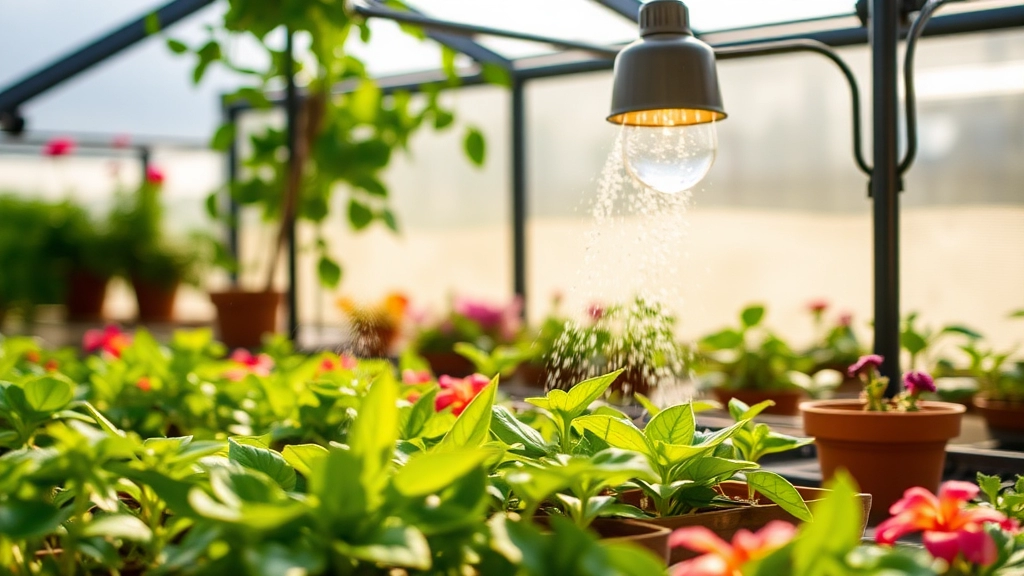
So, you’ve got your Kalanchoe ‘Pink Butterflies’ and you’re wondering how to keep it thriving, right?
Getting the light and watering just right is crucial for this stunning hybrid.
Light Requirements
First up, let’s chat about light.
- Bright Indirect Light: Kalanchoe ‘Pink Butterflies’ loves bright but indirect sunlight.
- Avoid Direct Sun: Too much direct sun can scorch those lovely leaves.
- Ideal Spots: A south or east-facing window is often perfect.
If you’re noticing the leaves stretching or losing their vibrant colour, it might be a sign it’s craving a bit more light.
Watering Needs
Now, onto watering.
- Allow to Dry: Let the soil dry out between waterings.
- Frequency: This usually means watering every 2-3 weeks, but it depends on your environment.
- Signs of Thirst: If the leaves start to look wrinkly or soft, it’s time for a drink.
Overwatering is a common pitfall, so always check the soil first.
Quick Tips
- Use Well-Draining Soil: This helps prevent water from sitting around the roots.
- Water in the Morning: This allows the plant to absorb moisture before the heat of the day kicks in.
With the right light and watering routine, your Kalanchoe ‘Pink Butterflies’ will flourish, showing off those beautiful pink hues.
Tips for Encouraging Propagation from Plantlets
As we delve into the fascinating world of Kalanchoe ‘Pink Butterflies’, it’s essential to explore how to encourage propagation from its unique plantlets. Many enthusiasts wonder how to successfully propagate these charming hybrids, and I’m here to share some straightforward tips to help you achieve that.
Understanding Plantlets
Kalanchoe ‘Pink Butterflies’ produces small plantlets along the edges of its leaves, making it a delight for those looking to expand their collection. Here are some effective strategies to ensure successful propagation:
- Timing is Key: The best time to propagate is during the growing season, typically in spring or early summer. This allows the plantlets to establish roots more easily.
- Gentle Removal: Carefully detach the plantlets from the mother plant using clean scissors. Aim to take plantlets that are at least a couple of inches long for better success.
- Rooting Medium: Use a well-draining soil mix. A combination of cactus mix and perlite works wonders. This helps prevent rot while providing the necessary nutrients.
- Watering Technique: After placing the plantlets in the soil, lightly mist them with water. Avoid soaking the soil, as too much moisture can lead to root rot.
- Humidity and Light: Place the newly potted plantlets in a bright, indirect light location. A humidity dome or plastic bag can help retain moisture until they establish roots.
- Patience is Virtue: Allow a few weeks for roots to develop. You can gently tug on the plantlet to check for resistance, indicating root growth.
By following these simple steps, you can successfully propagate Kalanchoe ‘Pink Butterflies’ and watch your collection flourish. For more detailed information on propagation, check out our complete guide to Kalanchoe Mother of Thousands care and propagation. Additionally, if you’re interested in other unique Kalanchoe varieties, don’t miss our top Kalanchoe succulent varieties and care tips.
Best Conditions for Vibrant Pink Coloration

So, you want your Kalanchoe ‘Pink Butterflies’ to flaunt those stunning pink hues? You’re not alone! Many of us have been there, wondering how to coax out that vibrant colour.
The good news is that achieving those eye-catching shades is totally doable with the right conditions. Here’s how to make it happen:
1. Light Exposure
- Bright, Indirect Light: Place your plant where it can soak up plenty of bright, indirect sunlight. Too much direct sun can scorch the leaves, while too little can dull the colour.
- Morning Sunlight: If possible, let it bask in the gentle morning sun. This helps to enhance the pink tones without overwhelming the plant.
2. Temperature Control
- Warm Temperatures: Keep your Kalanchoe in a warm spot, ideally between 18°C to 24°C (65°F to 75°F).
- Avoid Cold Drafts: Sudden temperature drops can stress the plant, leading to faded colours.
3. Soil and Nutrients
- Well-Draining Soil: Use a cactus or succulent mix to ensure proper drainage. This helps prevent root rot, which can affect the plant’s overall health and colour.
- Fertilise Wisely: A balanced fertiliser every few weeks during the growing season can boost colour. Just don’t overdo it—too much can have the opposite effect!
4. Watering Practices
- Moderate Watering: Allow the soil to dry out between waterings. Overwatering can lead to dull foliage and poor growth.
- Humidity Matters: While Kalanchoe prefers drier conditions, if you live in a humid area, ensure good airflow around the plant.
5. Stress for Colour
- Controlled Stress: A bit of stress can actually enhance the pink pigmentation. This could mean slightly reducing water or exposing it to more light—just be careful not to overdo it!
How to Handle Overgrowth and Pruning
Overgrowth can be a common concern for Kalanchoe ‘Pink Butterflies’, especially as they thrive in ideal conditions.
Many plant lovers worry about how to maintain the shape and health of their hybrid.
Understanding Overgrowth
Kalanchoe ‘Pink Butterflies’ can become leggy or unruly if not properly managed. Here’s how to keep your plant looking its best:
- Monitor Growth: Regularly check for excessive length in stems and crowded leaves.
- Timing: Prune during the spring or early summer when the plant is actively growing.
Pruning Techniques
Effective pruning can rejuvenate your plant and encourage bushier growth. Here are some straightforward steps:
- Use Clean Tools: Always use sterilised scissors or pruning shears to avoid introducing diseases.
- Identify the Right Stems: Look for stems that are leggy or damaged.
- Cut with Purpose: Trim back to just above a leaf node to promote new growth.
- Remove Dead Leaves: Clear away any dead or yellowing leaves to enhance air circulation.
Post-Pruning Care
After pruning, your Kalanchoe will need some extra attention:
- Watering: Allow the soil to dry out slightly before watering again.
- Light Exposure: Ensure the plant receives adequate light to encourage recovery.
Encouraging New Growth
To stimulate growth after pruning, consider the following:
- Fertilisation: Use a balanced fertiliser during the growing season.
- Humidity: Maintain moderate humidity levels to support new leaves.
For more detailed care tips, check out our complete guide to growing and caring for Kalanchoe ‘Pink Butterflies’ and our care tips for Kalanchoe ‘Pink Butterflies’ succulent.
Seasonal Flowering and Climate Sensitivity
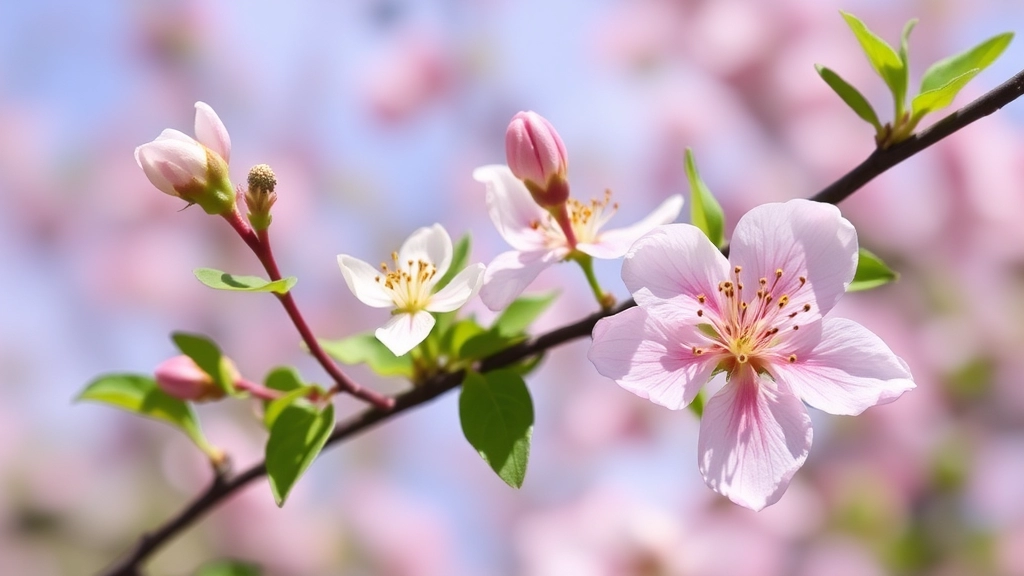
Have you ever wondered why your Kalanchoe ‘Pink Butterflies’ isn’t blooming when you expect it to?
Understanding its seasonal flowering and climate sensitivity can make all the difference in keeping your plant vibrant and happy.
Flowering Seasons
Kalanchoe ‘Pink Butterflies’ typically flowers in late winter to early spring.
Here’s what to look out for:
- Winter Dormancy: During the colder months, your plant might slow down. This is normal, and it’s a time for rest.
- Spring Awakening: As temperatures rise, expect bursts of beautiful pink blooms. This is when your care really pays off!
Climate Sensitivity
This hybrid is sensitive to its environment, and that can affect its flowering.
- Temperature: Ideal temperatures range from 15°C to 25°C. Too cold or too hot can stress the plant.
- Humidity: Moderate humidity is best. Too much moisture can lead to rot, while too little can cause stress.
Tips for Encouraging Flowering
Want to boost those blooms? Here are some simple tips:
- Light: Ensure your plant gets plenty of bright, indirect sunlight.
- Fertiliser: Use a balanced fertiliser during the growing season to promote flowering.
- Watering: Keep the soil slightly moist but never soggy. Overwatering can hinder blooming.
Finding the right source for Kalanchoe Delagoensis X Daigremontiana, often referred to as ‘Pink Butterflies’, can be a daunting task. You might be wondering where to find healthy plants that will thrive in your care.
Online Retailers
– **Specialty Plant Websites**: Many online nurseries focus on succulents and hybrids. Websites like **Etsy**, **Amazon**, and dedicated plant shops often carry this unique hybrid.
– **Local Garden Centres**: Check your local garden centres or nurseries. They may stock Kalanchoe varieties, especially during the spring and summer months.
– **Plant Exchanges**: Consider joining plant enthusiast groups on social media platforms. Members often share or sell cuttings of their plants.
Key Considerations
– **Reputation**: Always check reviews and ratings of sellers before purchasing.
– **Shipping**: Ensure the seller has a good shipping policy to avoid damage during transit.
– **Plant Health**: Look for sellers who guarantee healthy plants and offer return policies.
Local Markets
– **Farmers’ Markets**: Local farmers’ markets often feature vendors selling unique plants, including hybrids like ‘Pink Butterflies’.
– **Botanical Gardens**: Some botanical gardens have plant sales where you can find rare varieties.
For more detailed care tips on this unique hybrid, check out our [complete guide to growing and caring for Kalanchoe Pink Butterflies](https://planthq.org/complete-guide-to-growing-and-caring-for-kalanchoe-pink-butterflies/). If you’re also interested in other varieties, you might find our [Kalanchoe Succulent Identification Guide](https://planthq.org/kalanchoe-succulent-identification-guide-top-varieties-traits/) helpful.
Potential for Invasiveness and Responsible Cultivation
Have you ever worried about your Kalanchoe ‘Pink Butterflies’ taking over your garden?
It’s a valid concern. This hybrid, while stunning, can be a bit of a handful if not managed properly.
Invasive Traits
Kalanchoe Delagoensis X Daigremontiana has some traits that can make it invasive:
- Rapid Growth: It can spread quickly in the right conditions.
- Plantlets: The little plantlets it produces can root easily, leading to more plants than you bargained for.
- Resilience: It thrives in various environments, making it adaptable and hard to control.
Responsible Cultivation Tips
So, how do we cultivate this beauty without letting it run wild? Here are some straightforward tips:
- Container Gardening: Keep your Kalanchoe in pots. This limits its spread and makes it easier to manage.
- Regular Pruning: Trim back any unwanted growth to control its size and shape. For more detailed advice, check out our guide on pruning Kalanchoe plants.
- Monitor Plantlets: Regularly check for plantlets and remove them if you don’t want new plants popping up everywhere.
- Educate Yourself: Know your local regulations regarding invasive species. This will help you stay informed and responsible.
By following these simple steps, you can enjoy the beauty of Kalanchoe ‘Pink Butterflies’ without worrying about it taking over your space. If you’re interested in learning more about similar varieties, take a look at our article on succulent plants similar to Kalanchoe.
FAQs on Kalanchoe Delagoensis X Daigremontiana
What makes Kalanchoe Delagoensis X Daigremontiana unique?
This hybrid, also known as “Pink Butterflies,” combines the best traits of its parent plants. Its leaves are uniquely shaped like butterfly wings and feature a stunning mix of green and pink hues.
How resilient is Kalanchoe ‘Pink Butterflies’?
This plant is quite hardy and can handle neglect better than many other houseplants. It also produces plantlets that easily detach and root, making propagation easy.
When does Kalanchoe ‘Pink Butterflies’ bloom?
Typically, this plant blooms in the spring or summer, showcasing clusters of small, tubular flowers.
What are the light requirements for Kalanchoe ‘Pink Butterflies’?
Place your plant in a spot with bright, indirect sunlight. Rotate it every few weeks to ensure even growth. Avoid too much direct sunlight as it can scorch the leaves.
How should I water Kalanchoe ‘Pink Butterflies’?
Allow the top inch of soil to dry out before watering again. During the growing season, water more frequently, but reduce watering in winter as the plant enters dormancy.
What type of soil is best for Kalanchoe ‘Pink Butterflies’?
Use a well-draining soil mix, such as a cactus or succulent mix. Aim for a slightly acidic to neutral pH (6.0 to 7.0).
How often should I fertilise Kalanchoe ‘Pink Butterflies’?
Apply a balanced, water-soluble fertiliser every four to six weeks during the growing season. Dilute the fertiliser to half strength to avoid over-fertilisation.
What are the ideal temperature and humidity levels for Kalanchoe ‘Pink Butterflies’?
Maintain temperatures between 15°C to 25°C (59°F to 77°F). This plant prefers lower humidity, making it ideal for indoor environments.
How can I enhance the pink coloration of my Kalanchoe ‘Pink Butterflies’?
Ensure your plant receives bright, indirect light and warm temperatures (18°C to 24°C). Use well-draining soil and a balanced fertiliser during the growing season. Allow the soil to dry out between waterings and consider controlled stress techniques to enhance pigmentation.
Why isn’t my Kalanchoe ‘Pink Butterflies’ blooming?
This plant typically flowers in late winter to early spring. Ensure it gets plenty of bright, indirect sunlight, a balanced fertiliser during the growing season, and proper watering. Ideal temperatures range from 15°C to 25°C, and moderate humidity is best.
References
-
Houseplant411 – Kalanchoe ‘Pink Butterflies’ Plant Care Guide
-
Succulent City – Kalanchoe ‘Pink Butterflies’ Care Guide
-
Gardening Know How – Kalanchoe ‘Pink Butterflies’
